#Ahmose Nefertari
Text
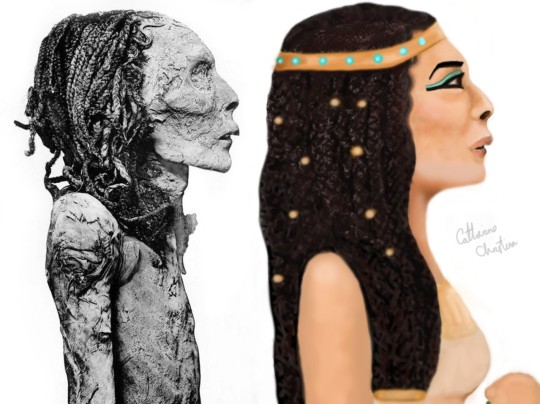
Based upon the mummy believed to be that of Ahmose Nefertari, the deified mother of Amenhotep I.
#ancient egypt#mummies#artists on tumblr#ahmose-nefertari#ahmose nefertari#new kingdom#egyptology#18th dynasty#amenhotep i
14 notes
·
View notes
Text
12 Facical Recreations Of Africa's Ancient Egyptian Pharaohs/Figures Based On Their Respective Sculptures
The 12 facial recreations of Africa’s ancient Egyptian pharaohs and figures based on their respective sculptures offer a captivating glimpse into the past. From the regal visage of Ahmose Nefertari to the serene countenance of Queen Tiye, each reconstruction brings history to life. The majestic presence of Amenhotep III and the enigmatic charm of Nefertiti are captured with remarkable precision.…
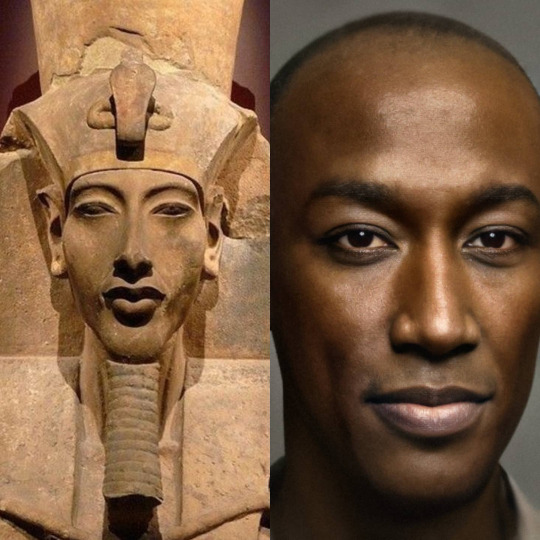
View On WordPress
#12 Ancient Egyptian Pharaohs Facical Recreations#African History#Ahmose Nefertari#Akhenaten#Amenemhat III#Amenhotep III#Ancient Egyptian Pharaohs Facical Recreations#Ancient Egyptians#ancient egyptians history#Djoser#Narmer#Nefertiti#Queen Tiye#Rameses II#Sahure#Senusret III#Tutankhamen
0 notes
Text
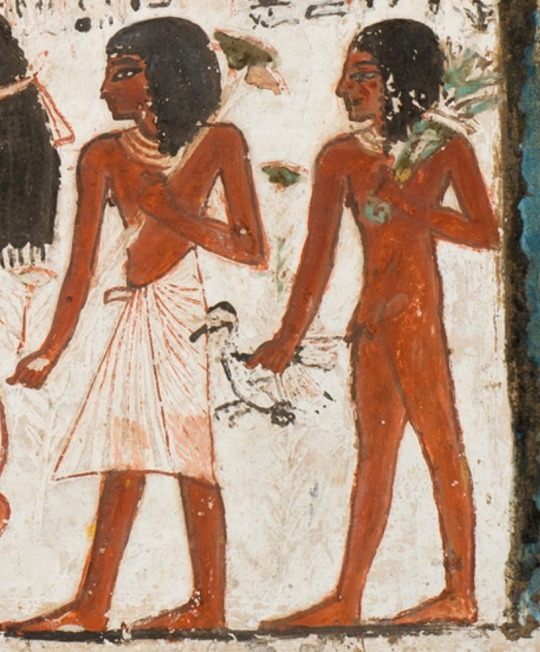
Stela of the Sculptor Qen worshipping Amenhotep I and Ahmose-Nefertari - Met Museum Collection
Inventory Number: 59.93
New Kingdom, Ramesside, Dynasty 19, ca. 1279–1213 B.C.
Location Information: From Egypt, Upper Egypt, Thebes, Deir el-Medina, Tomb of Qen (TT 4), König 1862
Description:
One of the select "servants in the Place of Truth," Qen was a member of the community of arts and craftsmen responsible for building and decorating the tombs of the New Kingdom pharaohs in the Valley of the Kings. This stela was found in 1862 in Qen's tomb at the workmen's village of Deir el-Medina. Qen's titles, as recorded on the stela, were "sculptor of Amun in the Place of Truth" and "sculptor of Amun in Karnak" suggesting that he specialized in carving relief.
In the lower register of the stela, Qen, his wife Nefertari, and their two sons, Merymery and Huy, are shown paying homage to the two seated figures above. These represent Amenhotep I, second king of Dynasty 18, and his mother Ahmose-Nefertari. By Dynasty 19, these two deified members of the royal family had become patrons of the Theban necropolis and especially of the workmen and their families.
#Stela of the Sculptor Qen worshipping Amenhotep I and Ahmose-Nefertari#new kingdom#ramesside#dynasty 19#upper egypt#thebes#deir el medina#deir el-medina#tomb of Qen#met museum#59.93#general childrens#NKRGC
0 notes
Text
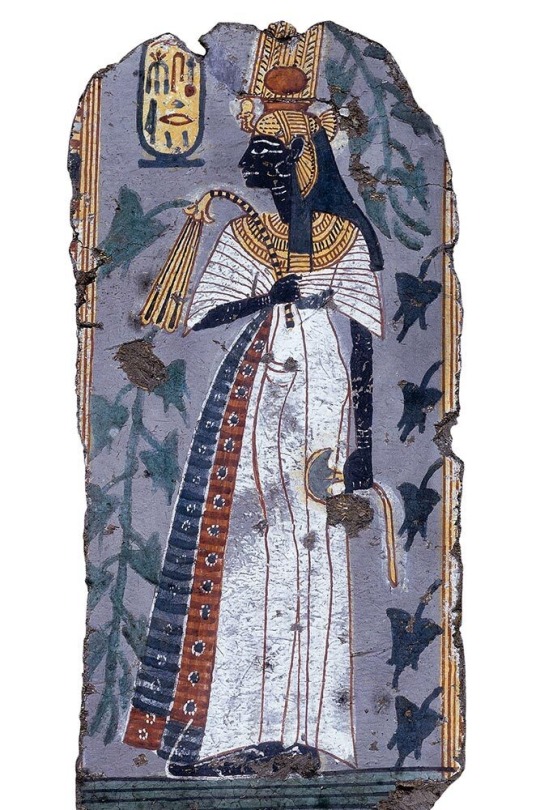
Move over, boys: Often, Egypt’s Queens had to do the work their male brethren could not. In the 16th Century B.C., three steadfast, wise, and Powerful Queens led Egypt against invaders—and won. Pictured above, Queen Ahmose Nefertari, who was worshipped for centuries after her death. Photograph By British Museum/Scala, Florence
0 notes
Text

Amenhotep I or Ramesses II wearing the Khepresh
This striding statuette of a New Kingdom king, depicts the king in a kilt (shendyt) adorned with an elaborate belt, a usekh collar around his neck, and most notably, the "Blue Crown of War", known to the Egyptians as the "Khepresh" upon his head, which is given a realistic glisten by the addition of rounded blue faïence.
The statue is often associated with Amenhotep I, but others, including the Louvre, where this statue now resides, label this piece as Ramesses II. This may be confusing, but it was not uncommon for kings to reuse or usurp relics from past monarchs, in fact Ramesses II is very well known among scholars for his usurping of past monuments and statues, especially those made during the reign of king Amenhotep III.
However, a further reason for this confusion when it comes to identifying this piece may or almost certainly comes from the deification of Amenhotep I within the Deir el-Medina region, where this piece was found.
Both Amenhotep I and his mother Ahmose-Nefertari became deified after their deaths. Ahmose-Nefertari outlived her son by approximately a year at the least, and became worshipped alongside her son for centuries after. Therefore, depictions of both Amenhotep I and his mother Ahmose-Nefertari are found in tombs and among other types of relics and funerary items dating from much later from their life-times. Thus, explaining statues and other depictions of either of the two dating from later king's reigns.
Read more
98 notes
·
View notes
Text
I've been asked to weigh in.
So.
No, Cleopatra wasn't black. She wasn't even African. Her family was Macedonian Greek, and they were infamously the most incestuous family in Egyptian history. No African DNA got in there. People who saw her while she was alive described her as having, "honey skin." She wasn't Elizabeth Taylor white, but she also wasn't what we'd call black.
That being said, there are PLENTY of Black figures in Egypt. The further back you go in Egyptian history, the less amount of trade routes with other nations, the more African they were. That means that the pyramid builders like Khufu, Khafre, and Menkaure were all likely black. Hatshepsut, the first woman to rule in her own right who established highly successful trade routes with Punt, was likely black. Tutankhamun's grandmother Tiye has always been depicted with dark skin. Queen Ahmose Nefertari was depicted as this:
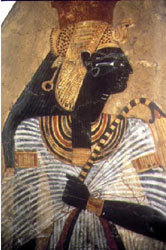
Then there's the entire Kushite Dynasty from Sudan who were black. This was a non-issue for Egypt. The biggest issue was if you worshipped their gods and respected their ways. If you did, then you were in. Alexander the Great was received like a hero because of this while the Persians were hated because of their disrespect for Egyptian culture.
3. Egypt even had what historians considered to be Asian rulers. The Hyksos invaders who ruled Egypt were from West Asia and some historians have posited that they were from the Indian subcontinent. (This has not been confirmed.)
Egypt was a melting pot with people from all over because of the lucrative trade routes. They were ruled by Greeks, Romans, Persians, Assyrians, Kushites, Hyksos, Libyans, etc. They had a blended culture.
So, it is interesting to me that this documentary chose a woman who was very clearly documented to NOT be black when Egypt has no shortage of Black figures to choose from. You'd think you'd want to tie yourself to the great legacies like Hatshepsut who made Egypt wealthy and stable over Cleopatra who lost Egypt its independence.
4. The one thing I CAN say for certain is that the actual Egyptians were NOT white. When I hear conspiracy theories that Ramses II was white from Scotland because he had red hair, it makes me so angry. They were not. Great things can and did come for non-white nations. Writing, language, government, medicine, etc ALL came from non-white nations. Egyptians referred to the Celts as Barbarians for a reason. Cleopatra, while she ruled Egypt, was NOT Egyptian. And that always gets forgotten. She hailed from a conquerer's line, not Egypt itself.
The thing about Egypt was they realistically depicted skin-color in Egyptian art. Maybe one day we'll find something of Cleopatra that will put this to rest. All we know is that her coinage shows her with distinctive European features, like a long, narrow, hooked nose. She has her hair in the Greek style.
341 notes
·
View notes
Text


AHMOSE NEFERTARI (Grandmother of Hatshepsut)
Ahmose Nefertari x Miss South Sudan
Ahmose-Nefertari was the first Great Royal Wife of the 18th Dynasty of Ancient Egypt…
She was a daughter of Seqenenre Tao and Ahhotep I, and royal sister and wife to Ahmose I…
Her son Amenhotep I became pharaoh and she may have served as his regent when he was young…
“The Tarifian, Badarian and Tasian cultures of Middle and Upper Egypt have strong ties with the Nubian/Nilotic pastoral tradition, as can be inferred, for instance, by the very similar pottery, economy and settlement pattern and by the latest findings in the deserts surrounding the Egyptian Nile valley” (Gatto 2011b, 2012a, b, 2013)
SOURCE;
(Prehistory and Protohistory of Ancient Civilizations; 2015)
In other words, Predynastic Ancient Egyptians (4500 B.C.— 3100 B.C.) are more closely related to Nubian / Nilotic peoples…
The Nilotic peoples are people indigenous to the Nile Valley who speak Nilotic languages…
They inhabit South Sudan, Sudan, Egypt, Ethiopia, Uganda, Kenya, the Democratic Republic of the Congo, Rwanda, Burundi and Tanzania…
Among these are the Burun-speaking peoples, Karo peoples, Luo peoples, Ateker peoples, Kalenjin peoples, Datooga, Dinka, Nuer, Atwot, Lotuko, and the Maa-speaking peoples…
Nubians / Nilotic peoples are the ORIGINAL inhabitants of ancient Kemet…
These are the ORIGINAL founders…
22 notes
·
View notes
Text

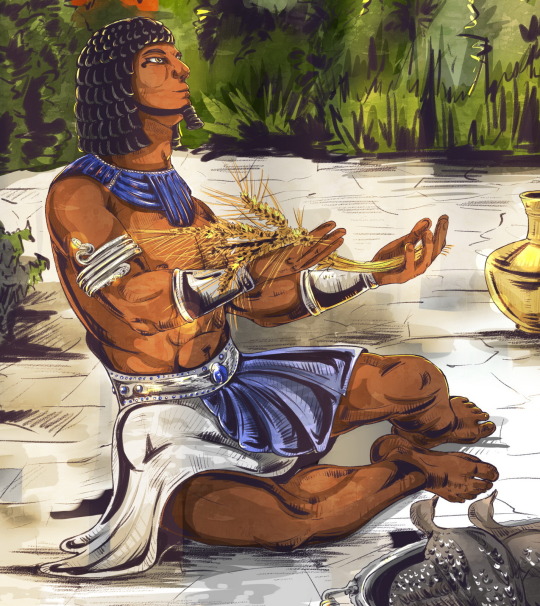

Ahmose I (Ahmes I) was a pharaoh who reigned approximately 1550 - 1525 BC. e., and is the founder of the 18th dynasty.
He was never particularly popular or known and that’s the reason that made me draw this picture so that people would remember him or learn about him.
Ahmose's reign began on the day he came of age (at the age of 16), by which time his heroic father Seqenenra Taa II was already dead (he died not from intrigue, as you might think, but in a battle with the Hyksos). Ahmose's mother, Queen Yahhotep, initially ruled together with her son until he got married. Having blessed the couple to have a long and happy life, she finally retired from political affairs (not really).
Ahmose continued the war with the Hyksos because his father’s work had to continue and his death had to be avenged. The brave pharaoh set his sights on the very capital of his vile enemies. The young pharaoh entered into an alliance with Crete, which was famous for its unsurpassed fleet (And also for dancing with bulls and a centralized water supply, but that’s another story). He led the combined fleet to Avaris, a fortified city located on the Nile Delta, which made approaches to it from the river quite convenient. Nevertheless, the siege lasted for an indecently long time and only in the 11th year of the reign of Ahmose, the city was captured through a fierce assault. Many hands were cut off, and the water was stained with blood to the delight of the alligators. The unfortunate Hyksos were forced to retreat all the way to Asia, liberating all of Lower Egypt.
But this did not stop Ahmose. The thirst for revenge and the desire to protect Egypt from further encroachments by the Hyksos forced him to capture the Sharukhen fortress in Palestine. The last stronghold of his enemies fell.
All this time, Queen Yahhotep did not sit idle and actively helped her son in military activities, earning awards for her valor (perhaps we will talk about her in our next illustrations). Recapturing Egypt became the greatest deed in the life of Ahmose (which, you see, is quite impressive).
While the young pharaoh was engaged in his military activities (after all, as you know, once you start, it’s impossible to stop), his still fragile power over Egypt weakened. Uprisings began. However, they were successfully suppressed, thus finally strengthening him on the throne.
Finally, as he grew older, Ahmose’s ardor subsided and he began construction work. However, he was not so good in this field and practically not a single building of Ahmose has survived to this day. However, during his time new quarries were opened for the construction of temples, so everything is not so bad.
Ahmose's mother and grandmother were quite strong women who actively participated in political and even military activities until their last day. The first wife of Ahmose, Ahmose-Nefertari, also did not lag behind her relatives. All these women overshadowed Ahmose himself (we will not write about their deeds here). However, he loved his family and treated them with respect, which is reflected in some frescoes and in the records of scribes.
The painting reflects my interpretation of the fresco on the stele that Ahmose dedicated to his grandmother Tetisheri after her death. Here he makes offerings to her.
Ahmose died early, he was about 40 years old. After his death, his son Amenhotep I took the throne.
If you want to know more about this pharaoh, but don't want to read boring historical texts, there are works of fiction on the topic. Ahmose is the main character in Naguib Mahfouz's novel The War of Thebes and Christian Jacques's Wrath of the Gods trilogy. Both works tell the story of the liberation of Egypt from the rule of the Hyksos.
Artstation | Deviantart | VK | Commission List
#galgannet#illustration#ancient egypt#egyptian art#ancient history#egyptology#egyptian#Tetisheri#Ahmose I#Pharaoh Ahmose#древний египет.#Digital 2D#Comic Art#Illustration#pharaoh#Stylized#NoAI
14 notes
·
View notes
Text
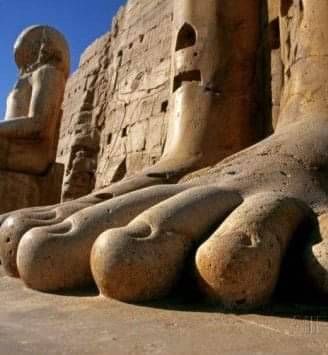
Luxor, toes of a massive statue in the Karnak Temple near the eighth pylon.
The 8th pylon was built during the reign of Queen Hatshepsut. Along its southern side were erected statues of Thutmose II, Amenhotep I with Ahmose-Nefertari and Amenhotep II.
24 notes
·
View notes
Text
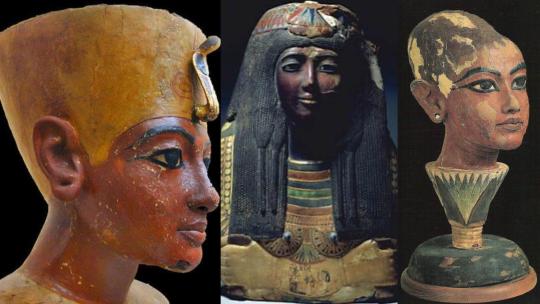
Ancient Black Egyptians? They were African? Were they? This was a topic that was raised and discussed. It is true that other studies have been carried out which suggest the opposite. But the answer is there if you look closely at the enormous array.
Here are the facts that prove ancient Egyptians were Black and Africans.
Ancient Egyptians referred to their homeland as Kmt (conventionally pronounced as Kemet). According to Diop, the Egyptians referred to themselves as “Black” people or kmt, and km was the etymological root of other words, such as Kam or Ham, which refer to Black people.
Senegalese scholar Dr. Cheikh Anta Diop (1923-1986)’s role in life was to challenge Eurocentric and Arab-centric perceptions of pre-colonial African society. He set out to prove definitively that Egypt’s ancient civilization had its origins in Black Africa. At the Museum of Man in Paris, he performed melanin checks on Egyptian mummies and concluded that all the ancient Egyptians were among the Black races.

Egyptian pharaoh Tutankhamen and family analysis by DNATribes recently found that sub-Saharan Africans, especially those from Southern Africa and the Great Lakes region, are the closest living relatives of the mummies, Face2Face Africa documented.
Scouring the past of Egypt and ancient Egyptians, some ancient Greek historians said that the skin of ancient Egyptians was “melanchroes,” that is, black or dark-skinned. The ancient Egyptians were also identified by early Latin eyewitnesses as “black-skinned.”

Scholars Agree
Some of the world’s most esteemed scholars have speculated that Egyptians were Black Africans. Some modern researchers, like W. E. B. Du Bois accepted the theory that Ancient Egyptian society was mostly black Face2Face Africa documented.
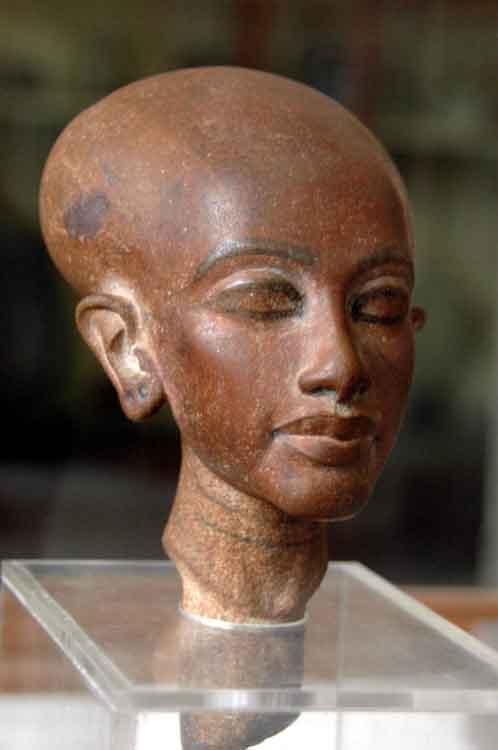
In addition to Dr. Diop’s research, in its geographic DNA study, National Geographic recorded that 68 percent of present-day Egyptians are ethnically North African, with foreign invasions having little influence on the genetics of most modern Egyptians.
Some of the most famous ancient Egyptians have been identified as black. For example, Queen Ahmose-Nefertari is most often identified as a woman of color. “According to Sigrid Hodel-Hoenes, the author of “Life and Death in Ancient Egypt,” the Queen’s black skin color is derived from her role, as black is the color of both the fertile earth and the netherworld and death.”

“The term is a collective noun which thus described the whole people of Pharaonic Egypt as a Black person,” according to Diop.
Reading Bones
Most of the skeletons and skulls of ancient Egyptians had characteristics similar to those of modern Black Nubians and other people of the Upper Nile and East Africa, showing they were Black and African, according to study by scientist Diop.
The Blood Group Tell Us
Also, blood type is evidence, according to Diop. He discovered that even after hundreds of years of intermixing with foreign invaders, the blood type of modern Egyptians is the same group B as West Africa populations on the Atlantic seaboard and not the white race’s A2 characteristic prior to any crossbreeding,’ The Atlanta Star reported.
Mother Tongue Evidence
Also, blood group is evidence, according to Diop. He discovered that even after centuries of intermarrying with foreign invaders, the blood type of modern Egyptians is the same group B as West Africa tribes on the Atlantic seaboard and not the white race’s A2 characteristic prior to any crossbreeding.
“The Atlanta Star reported that Diop clearly indicates that ancient Egyptian, modern Egyptian Coptic, and Wolof are related, with the latter two having their origins in the former.
Diop wrote in the “General History of Africa”: “The relationship between ancient Egyptian and African languages is not a fictional fact, but a demonstrable fact that it is impossible to put aside for scholarship.”
22 notes
·
View notes
Photo

The deified Queen Ahmose-Nefertari as depicted in tomb TT359 of Inherkhau. 18th Dynasty, Neues Museum, Berlin.
65 notes
·
View notes
Text
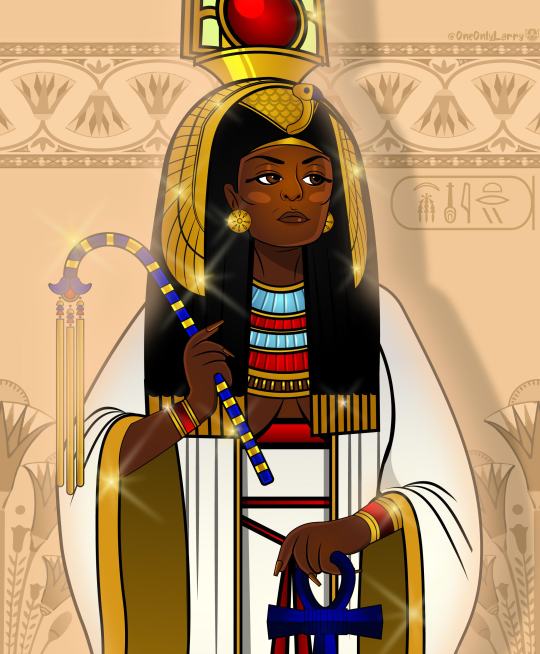
Ahmose-Nefertari was an influential queen of ancient Egypt, renowned for her significant contributions during the New Kingdom period, specifically the 18th Dynasty. Born around 1570 BCE, Ahmose-Nefertari belonged to the powerful Theban royal family, as the daughter of Seqenenre Tao II and Ahhotep I.
Her early years were marked by political turbulence as she witnessed the Hyksos invasion and the subsequent efforts of her brother, Ahmose I, to expel these foreign rulers and reunify Egypt. Following the death of her brother, Ahmose-Nefertari married him, becoming his queen. Together, they played pivotal roles in the liberation of Egypt from Hyksos rule, a triumph that marked the beginning of the New Kingdom.
Ahmose-Nefertari is often celebrated for her active participation in the restoration of Egypt's power and glory. As a queen, she supported her husband's military campaigns and diplomatic efforts, securing alliances and fostering stability. Her influence extended beyond traditional roles, and she is believed to have wielded considerable authority.
In addition to her political achievements, Ahmose-Nefertari is noted for her cultural and religious contributions. She was a devoted patron of the arts, encouraging the flourishing of literature, music, and architecture. Temples and monuments were erected in her honor, and her image was immortalized in various artworks.
A woman of intelligence and foresight, Ahmose-Nefertari played a key role in shaping the early years of the New Kingdom. Her legacy endures through the monumental achievements of her reign and her enduring impact on the cultural and political landscape of ancient Egypt. Her death, estimated around 1510 BCE, marked the end of an era, but her memory lived on in the annals of Egyptian history.
Based the illustration off of Ahmose Nefertari's Mummy
#art#artist#artsy#artwork#illustration#arte#blackartistsmatter#egyptian#ancient egypt#ancient history#history#queen#egyptology#anthropology#kemetic#kemet
8 notes
·
View notes
Photo
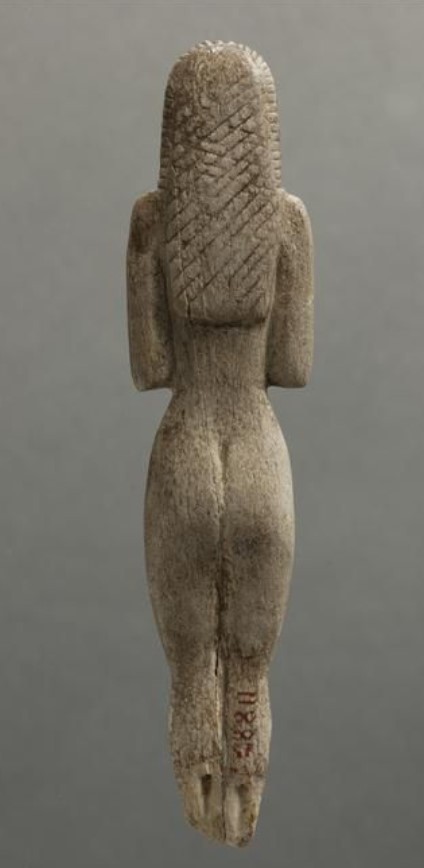

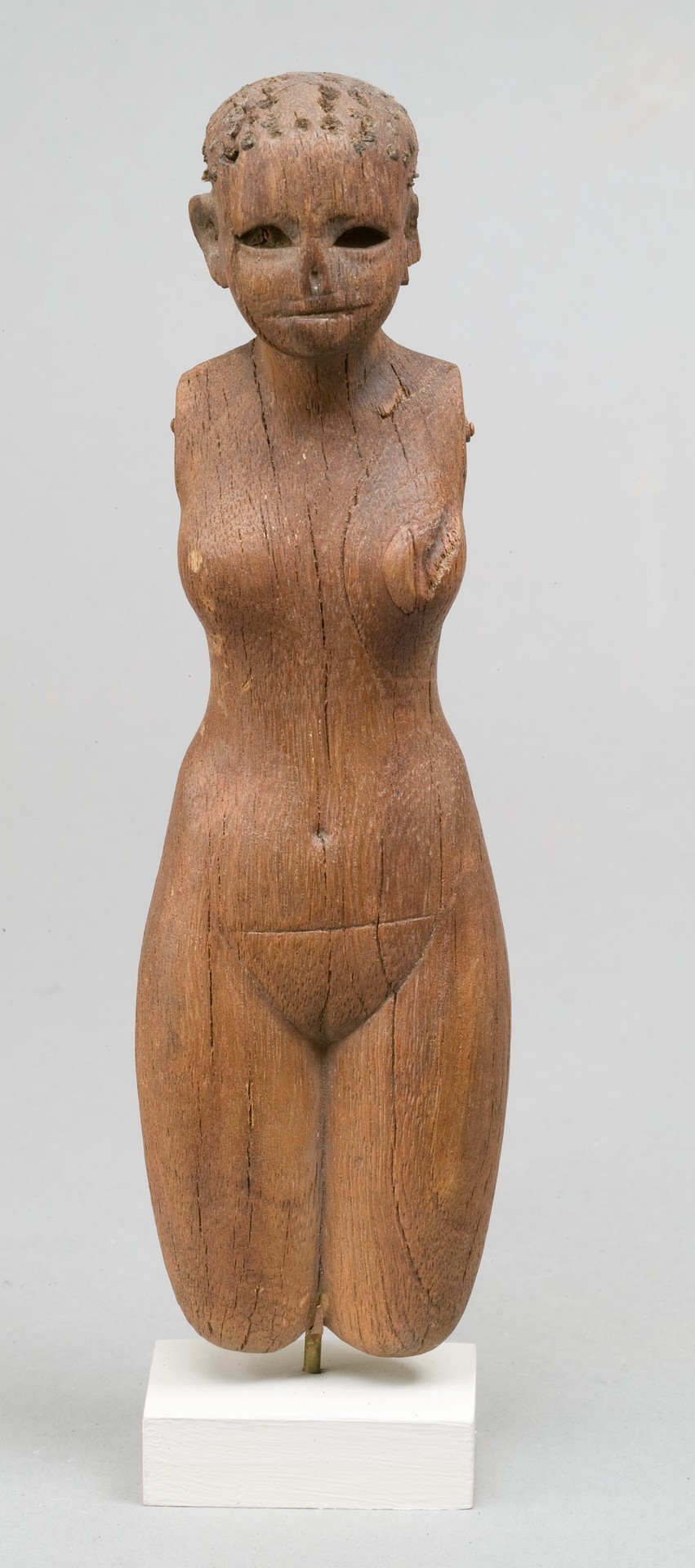
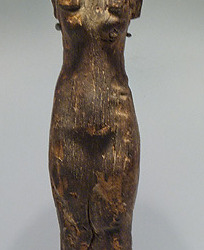
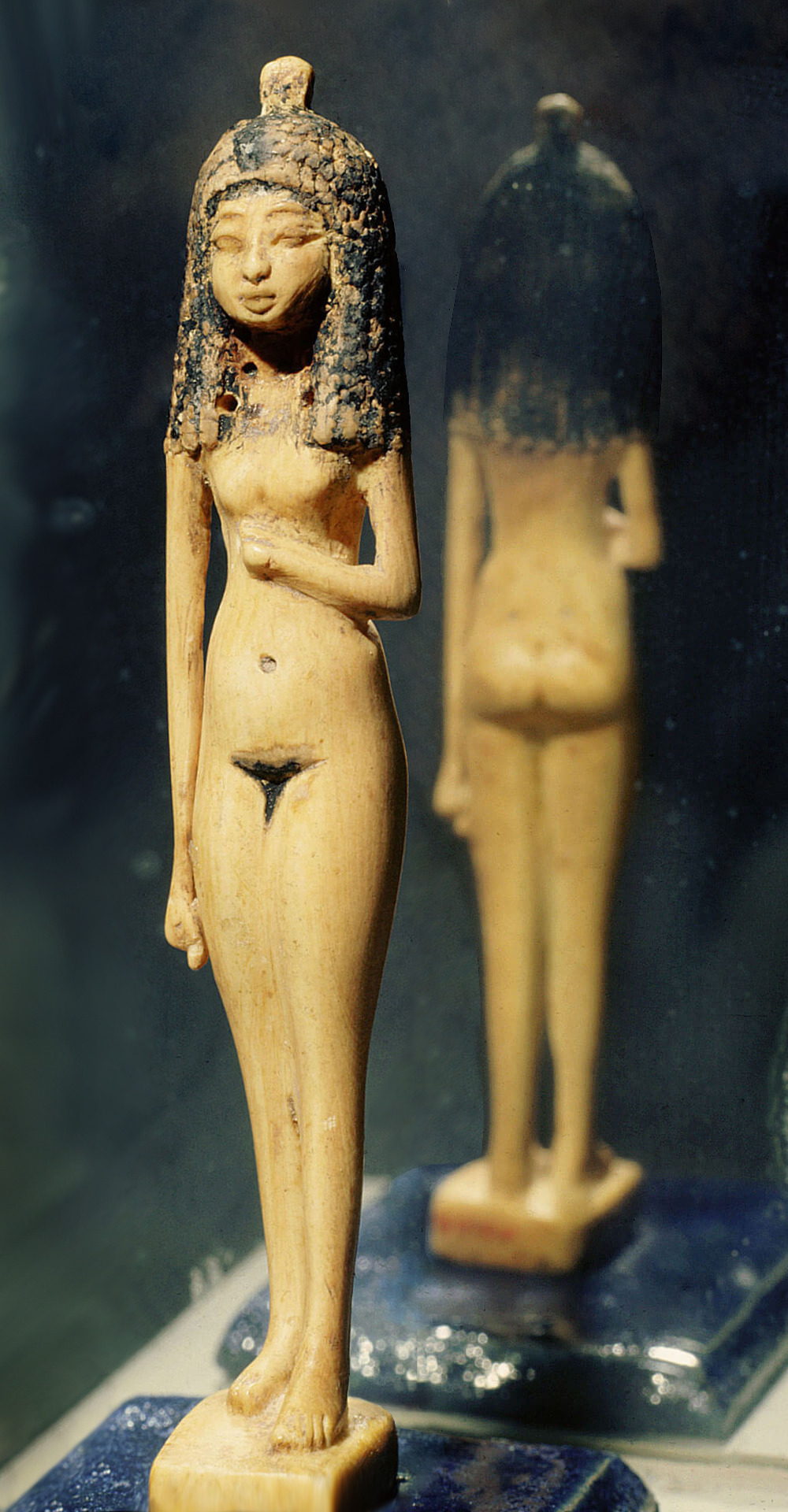

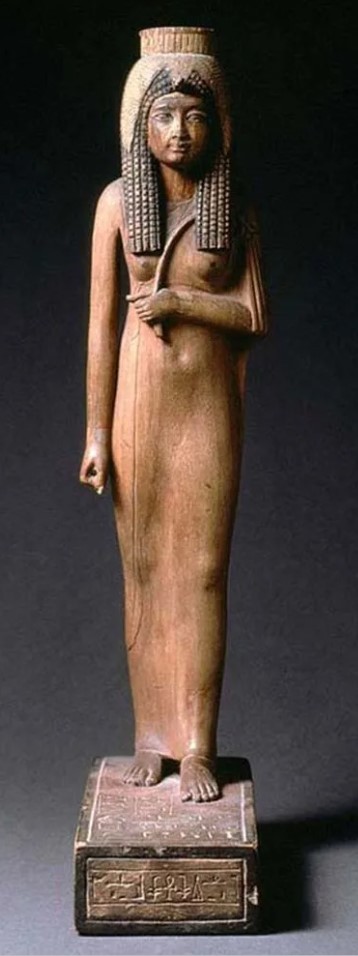
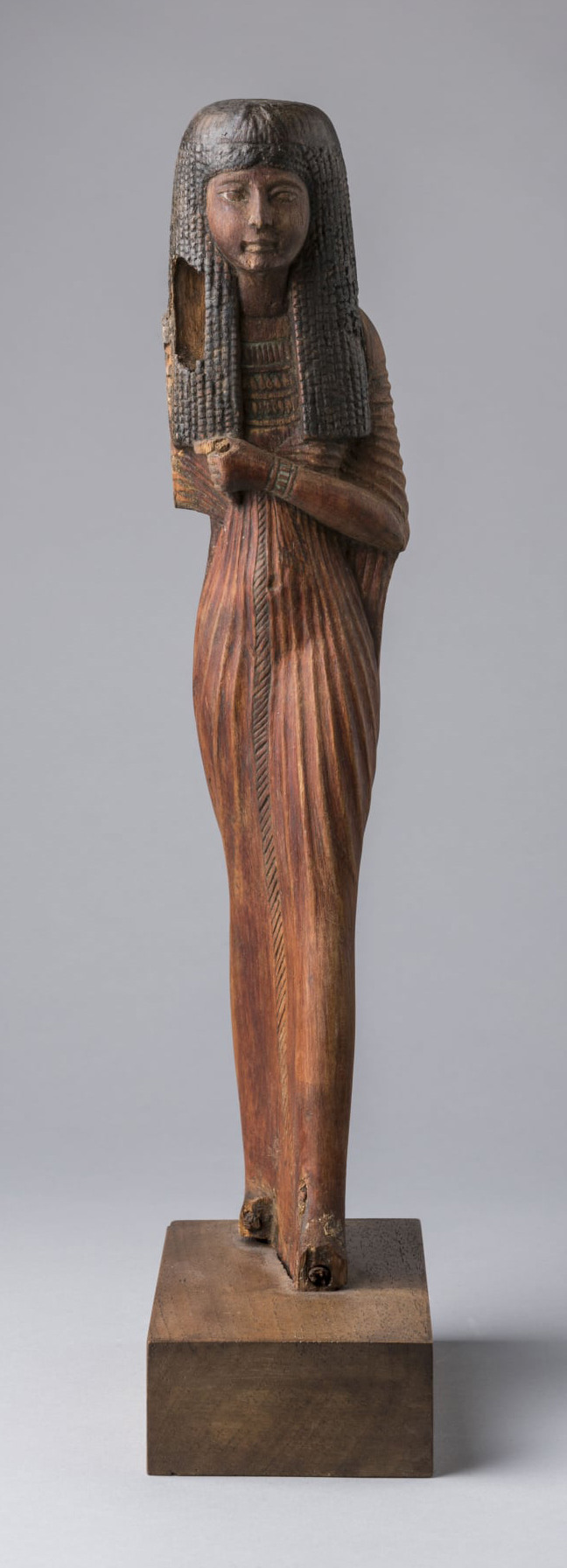
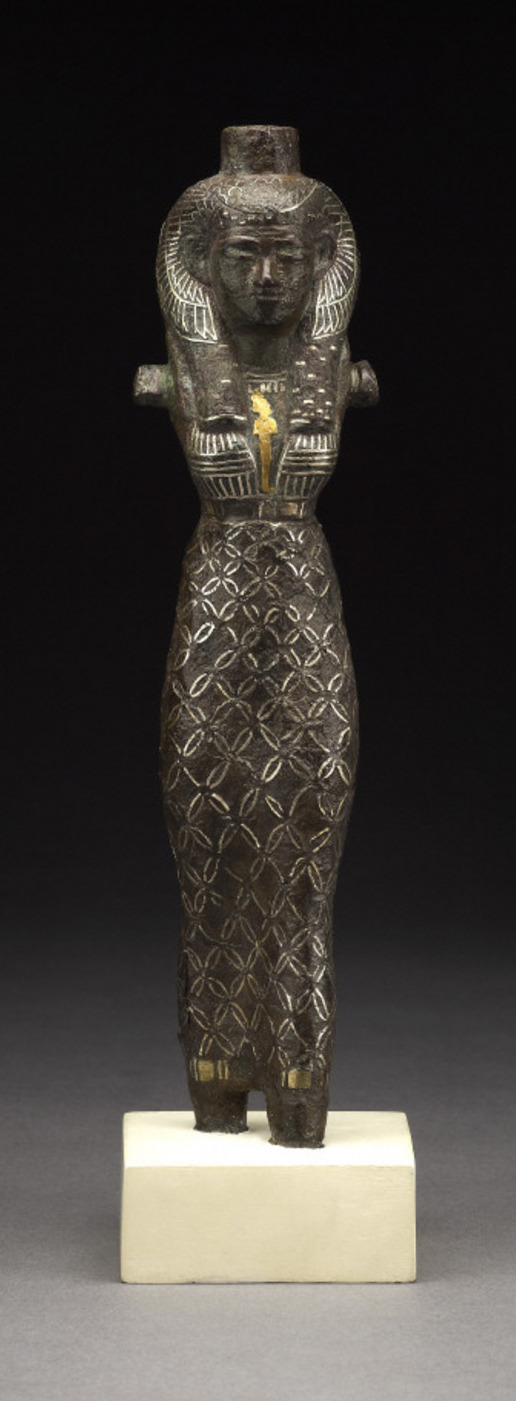
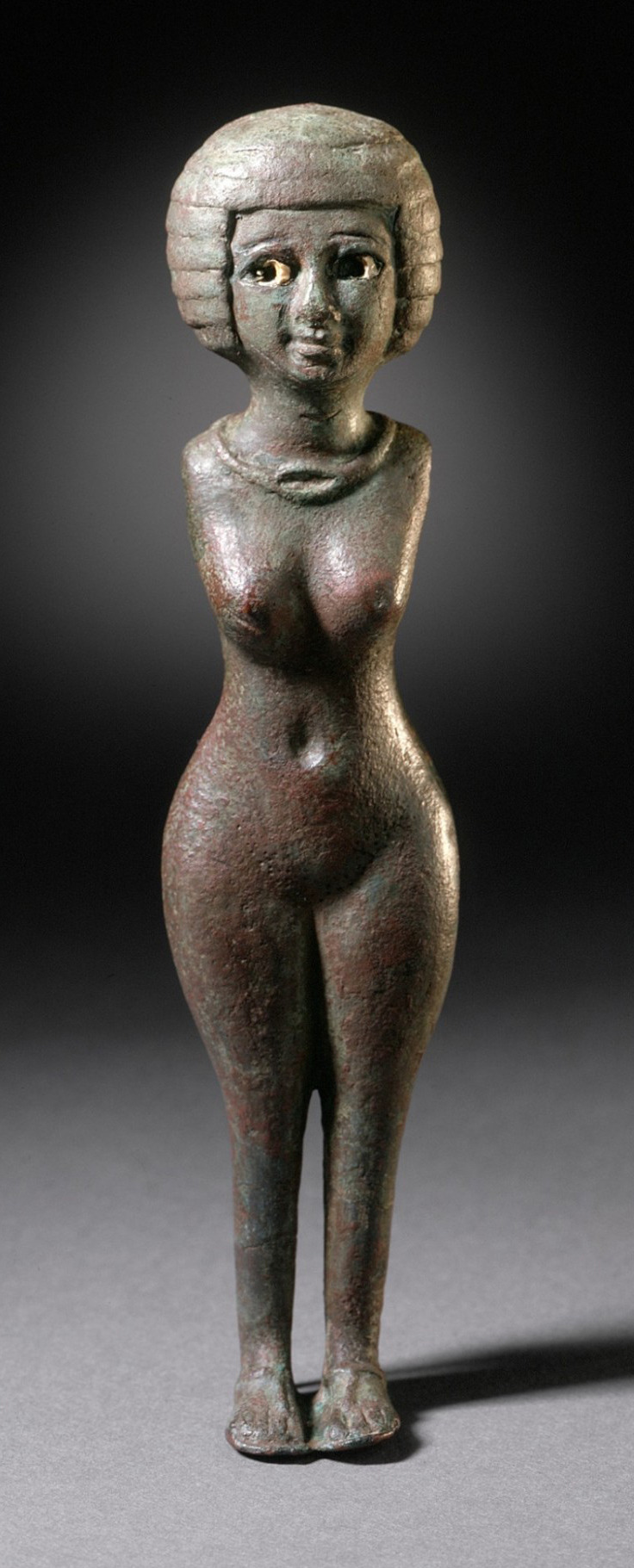

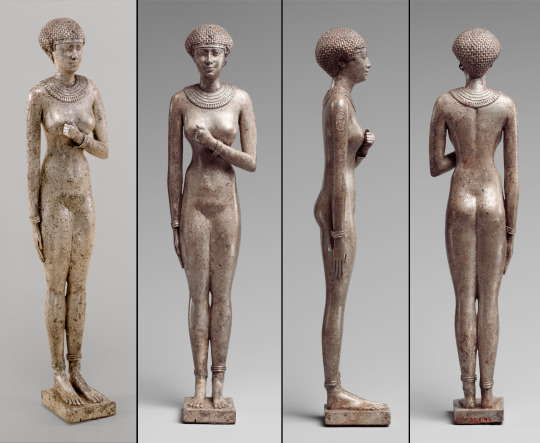
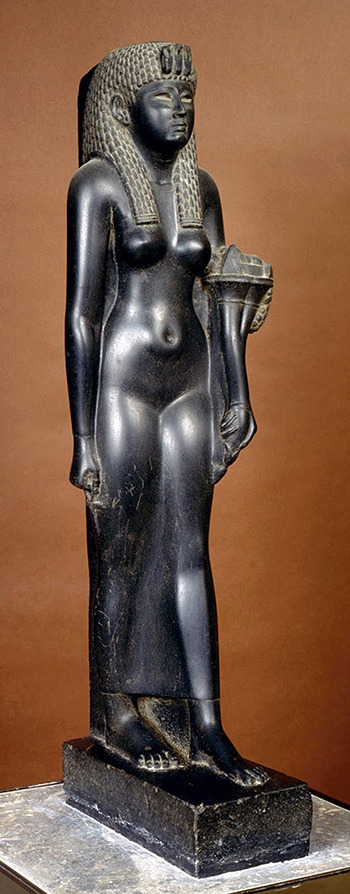
the female figure as portrayed in over 4,000 years in ancient Egypt — from Neolithic times up until Cleopatra
Female Nude - ivory - Neolithic - Predynastic Period, Naqada I, c.4400-3500 BCE
Priestess Imertnebes - wood, faience, bronze - Middle Kingdom, c.1991-1783 BCE
torso of a woman - wood - Middle Kingdom, Dynasty 12 c.1850–1640 BCE
female figure - painted wood with gold-leaf inlaid eyes - New Kingdom, 1551-1070 BCE
figure of a young concubine of King Amenhotep III - c.1386-1349 BCE
figure of a woman - ivory - New Kingdom, 18th or 19th Dynasty - c.1550-1070 BCE
Queen Ahmose-Nefertari - wife of Ahmose 1, mother of Amenhotep 1 - 19th Dynasty
striding woman - polychrome wood - Thebes - New Kingdom, 19th Dynasty, c.1292-1189 BCE
figure of a queen or divine consort - copper alloy inlaid with gold detail - Third Intermediate Period, c.1069-664 BCE
Nubian female figure - bronze with inlaid eyes - Late Period, 25th Dynasty c.711-600 BCE
cosmetic container in the shape of a young swimmer - 26th Dynasty
figure of a woman (four views) - silver - Late Period (Saite), reign of Necho II, Dynasty 26 - c.610-595 BCE
Cleopatra VII Philopator - black basalt - 146 cm high - Ptolemaic Period, 1st century BCE
42 notes
·
View notes
Text
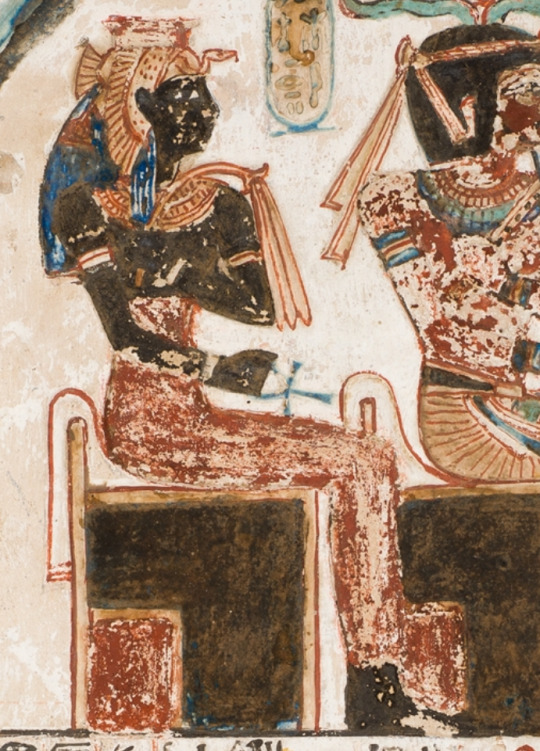
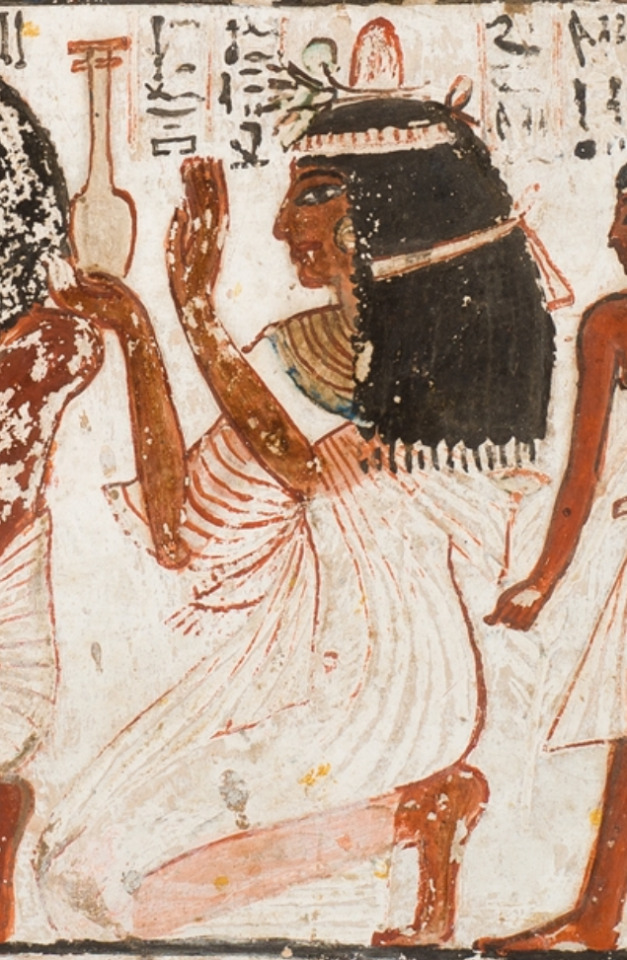
Stela of the Sculptor Qen worshipping Amenhotep I and Ahmose-Nefertari - Met Museum Collection
Inventory Number: 59.93
New Kingdom, Ramesside, Dynasty 19, ca. 1279–1213 B.C.
Location Information: From Egypt, Upper Egypt, Thebes, Deir el-Medina, Tomb of Qen (TT 4), König 1862
Description:
One of the select "servants in the Place of Truth," Qen was a member of the community of arts and craftsmen responsible for building and decorating the tombs of the New Kingdom pharaohs in the Valley of the Kings. This stela was found in 1862 in Qen's tomb at the workmen's village of Deir el-Medina. Qen's titles, as recorded on the stela, were "sculptor of Amun in the Place of Truth" and "sculptor of Amun in Karnak" suggesting that he specialized in carving relief.
In the lower register of the stela, Qen, his wife Nefertari, and their two sons, Merymery and Huy, are shown paying homage to the two seated figures above. These represent Amenhotep I, second king of Dynasty 18, and his mother Ahmose-Nefertari. By Dynasty 19, these two deified members of the royal family had become patrons of the Theban necropolis and especially of the workmen and their families.
#Stela of the Sculptor Qen worshipping Amenhotep I and Ahmose-Nefertari#new kingdom#ramesside#dynasty 19#upper egypt#thebes#deir el-medina#deir el medina#tomb of qen#met museum#59.93#womens clothing#NKRWC
0 notes
Text
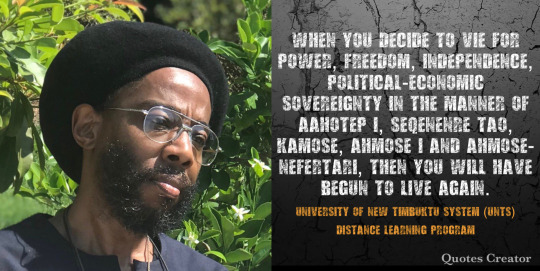
When you decide to vie for power, freedom, independence, political-economic sovereignty in the manner of Aahotep I, Seqenenre Tao, Kamose, Ahmose I and Ahmose-Nefertari, then you will have begun to live again.
4 notes
·
View notes
Text

Model of meskhetyu, a tool for the ‘Opening of the Mouth’, with cartouches of Ahmose Nefertari and Amenhotep I
New Kingdom, early 18th Dynasty, ca. 1526-1506 BC.
Egyptian Museum, Turin. Cat. 6303
In the ancient Egyptian myth, this ritual was first performed by Horus on his father Osiris not only for this latter to enjoy his senses in the Afterlife, but also to declare the legitimacy of the first as the rightful heir of the throne.
The Opening of the Mouth ceremony was an important ritual in ancient Egyptian religious practices. Its purpose was to restore the deceased person’s senses and abilities in the afterlife, ensuring their well-being and enabling them to partake in the offerings and rituals performed by the living.
Read more
18 notes
·
View notes